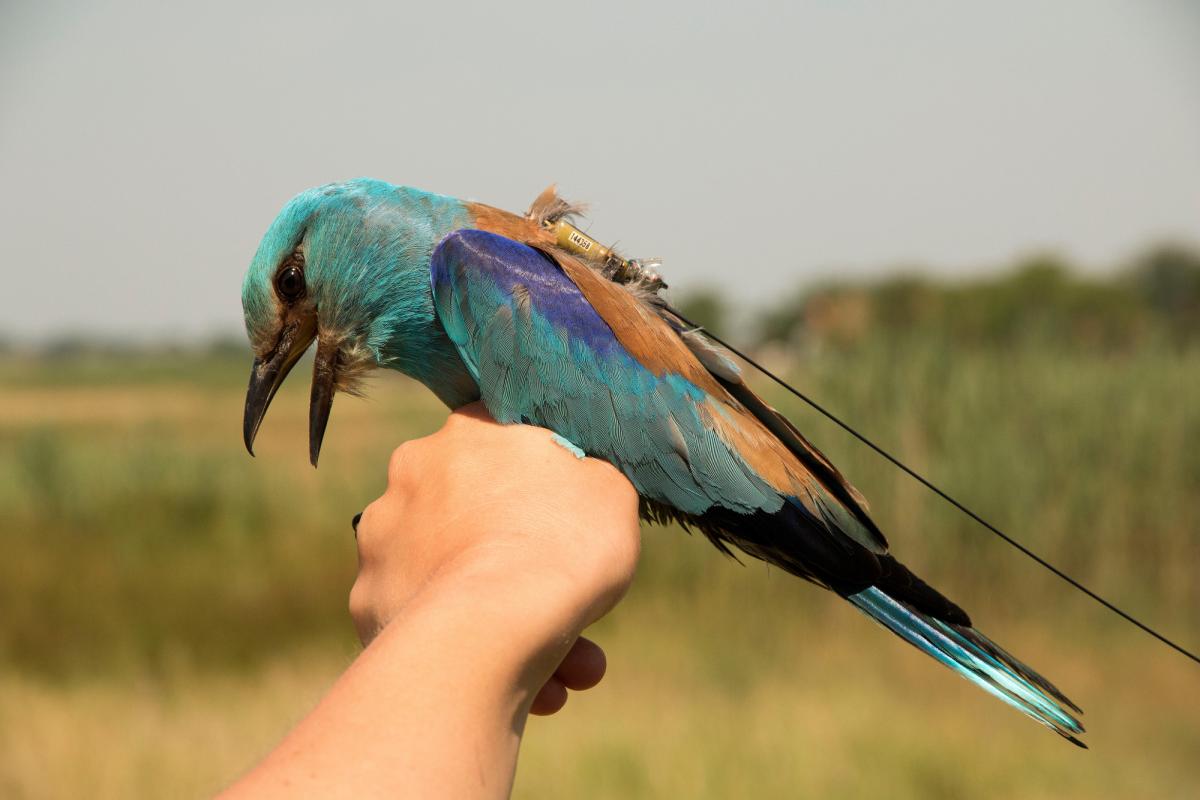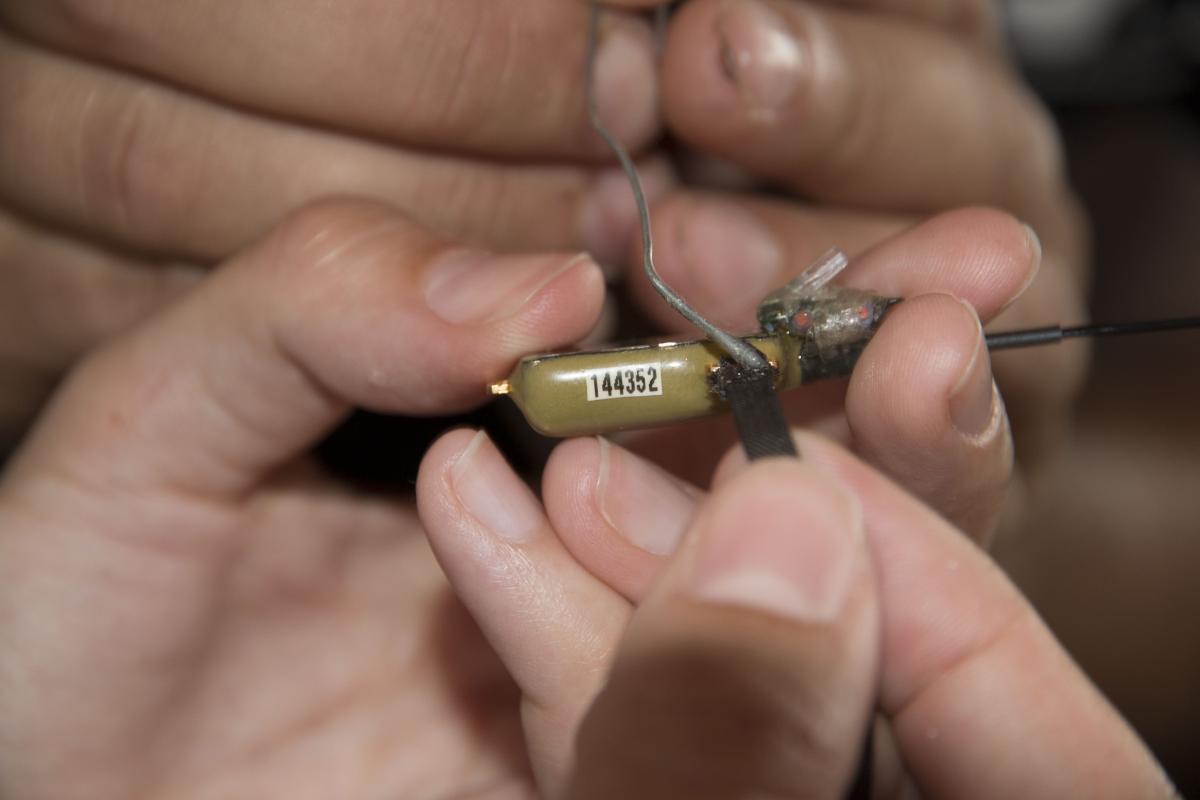The first satellite tagged rollers in Hungary
2015.07.10. 14:25
Roller numbers are declining significantly across Europe and the species has already become extinct in several Western European countries. With this is light, it is very important to protect the stable population of the Carpathian Basin to ensure the species’ future within the EU. During the last two weeks 13 rollers have been fitted with satellite transmitters by experts from BirdLife Hungary (MME) within the framework of the “Conservation of the European roller within the Carpathian Basin” LIFE+ project. The number of rollers tagged as part of the project will reach as much as 100 by 2020.
With the help of these satellite transmitters we’ll be able to gather accurate information on the behaviour of the birds, whether they’re on their breeding site in Europe, or on migration to the Sub-Saharan Africa. A special feature of the project is that visitors can follow the daily movements of the birds on the www.satellitetracking.eu website.

A roller fitted with an Argos PTT transmitter (Photo: Béla Tokody).
The migration routes and wintering grounds of the Hungarian rollers are almost completely unknown. The traditional method of ringing and recapture only provided a small amount of data over the last 100 years, which is clearly not enough if we want to understand the threats rollers face during migration and wintering.
Each year rollers only spend about four months in Europe, and 8 months either migrating to and from-, or wintering in Africa. During the almost 10.000 km long journey they face many challenges and a large number of birds perish due to illegal hunting, degradation of stopover and wintering sites, food shortage and global climate change. Better understanding the exact location of the migration routes could help us reduce these threat factors and could potentially lead to attaining legal protection for the most important wintering sites with the help of the local BirdLife partner.
Besides the detailed mapping of migration routes and wintering sites, it is also important to gather more information on the use of the breeding sites. Better understanding the habitat use of the breeding rollers can help us restore the degraded areas. As part of the LIFE+ project we will carry out demonstrative habitat restorations in 3 different habitat types:
- the short-grassed steppe, and riverine floodplain forest habitat at the Alsó-Tisza-völgy SPA,
- and wooded pastures will be restored at the Borsodi-sík SPA.
Two different transmitters will need to be applied in the above mentioned two scientific studies. With the help of the classic PTT transmitter researchers can determine the bird’s location based on the signals the transmitter sends to the Argos system, a scientific satellite system, that relay these data to the ground in realtime for scientists to use. PTT transmitters can provide a 1-2 km precision anywhere on Earth. Within the framework of the project, between 2014-2020, 30 adult rollers will be fitted with PTT transmitters in Hungary, and 10 in Romania.

PTT transmitter (Photo: Béla Tokody).
Gathering information about the habitat use of breeding rollers however requires a much higher precision than that provided by the PPT transmitters. To overcome the precision issue, we’ll need to use GPS loggers that can provide an incredibly detailed, up to 3 m precision. These loggers can store up to 30.000 location data, but the range of their transmission is fairly limited. The stored data can be downloaded from a maximum distance of about 200 metres using a receiver and an antenna, which means that the use of GPS loggers requires continuous monitoring in the field in order to collect the data in the breeding season. Sixty rollers will be equipped with GPS loggers in Hungary over the next 5 years.

Roller with a GPS logger (Photo: Antal Széll).
The weight of the transmitters including the harness should not exceed 3-5% of the bird’s body weight. An average roller weighs 130-180 g, whilst the PTT transmitter used for tagging them is only 4.5 g, and the GPS loggers weigh 5.5 g, which means that neither devices should interfere with the everyday life of the birds.
Béla Tokody, Gabriella Göcző, Zoltán Orbán


















